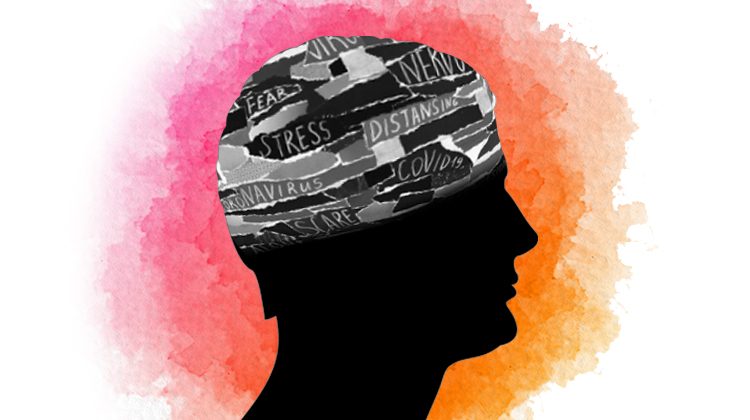It is 3:00am and I am awake. Again.
This is the third time this week. I reach for my phone and open up my social media app where I scroll through the latest COVID-19 updates in a group of doctors that is 13,000-strong. My eyes frantically try to keep up with numerous graphs, projections, news stories and the impacts of compromised mental health during COVID-19. Scattered in between these are personal stories of frustration, anger or even complete denial of the scale of the problem.
By the time I manage to get to work and see my first patient at 8:00, my mind has already spent 5 hours ruminating about COVID-19. My eyes are dry and my shoulders already feel heavy. Surely this behaviour is unsustainable? A chat in the tearoom with my colleagues, sitting 1.5m away from me, reveal this phenomenon to be common.
As we find ourselves in the midst of a one in 100-year event that has upheaved our daily schedules, it is normal to feel stressed, worried or anxious. With rapidly changing government policies regarding work and play, isolation and uncertainty prevails over consistency, routine and social interactions. Many of us in the healthcare and technology industries, who are still able to work and have a steady income, watch in fear as those in the hospitality, retail and tourism industries lose their jobs and livelihoods. We worry about the future and about the economy.
Is the government doing enough?
Why did they let all those people off the Ruby Princess?
Are we doing enough to look after mental health during COVID-19?
Will there be a global economic recession or a depression on the other side of this pandemic?
Stress occurs when there is a perceived threat that is beyond our ability to control. When we are are stressed, there are physiological changes within our body that cause us to be more alert and vigilant. This is commonly known as the ‘fight or flight’ response. If the threat is continuous or persistent, those physiological changes can affect our emotional health and well-being in the form of anxiety.
Anxiety, much like a chameleon, can manifest in many ways. It can be as subtle as mild irritability and a reduction in concentration, to a more noticeable insomnia, early morning rising or reduced appetite, to full blown panic attacks with physical symptoms. This can be compounded by our current situation of physical and social isolation, that has become an mandated part of life today.
How Can We Deal With the Constant Strain on Mental Health during COVID-19?
The first step to coping is to accept that there are many variables that are completely out of our control, such as the duration of this pandemic; how many people will be affected; how others are responding to the situation and if there is enough toilet paper at the shops.
The second step is focusing on the variables we do have control over – such as our daily routine, finding enjoyable things to do at home, connecting with and supporting our friends, families and colleagues. Practically this may involve simple things like going for daily exercise in the morning, getting ready everyday, going to ‘work’ in a dedicated room and clearing it away when work has finished, having breaks, doing activities with the family, debriefing with friends and colleagues and switching off the news and social media. Some workplaces have created virtual ‘tea rooms’ or ‘water coolers’ in their respective meeting applications where staff can drop in at random times, as they would if in an office, and catch up with other colleagues whom they may not interact with regularly.
Of the above, daily exercise is proven to be the most effective intervention for stress at a population level. This is likely because sunlight and the natural hormones that get released during exercise can elevate the mood. For me personally, limiting social media and the news has also helped significantly as my brain gets a break from the constant negative stimulus after 7pm every night. Re-discovering the myriad of enjoyable things to do at home such as gardening, board games and reading, to finally getting through the decade old to-do list of sorting travel photos and decluttering, these activities have provided a welcome sense of achievement.
The link below is a great resource that explains how our normal worries can become excessive, and it provides some methods on how we can stop ourselves from progressing through a negative chain of thoughts that can lead to heightened risk to our mental health during COVID-19. There are also some practical tools included, such as an Activity Menu to keep occupied and a Decision Tree about how to prevent ourselves from overthinking things which are out of our control.
Click here to download a helpful PDF on managing stress and anxiety during this difficult time.
If these simple measures do not help to improve how you are feeling, then it may be time to check-in with your GP.
Authored by:
Dr. Fabrina Hossain
Clinical Advisor at Best Practice Software

